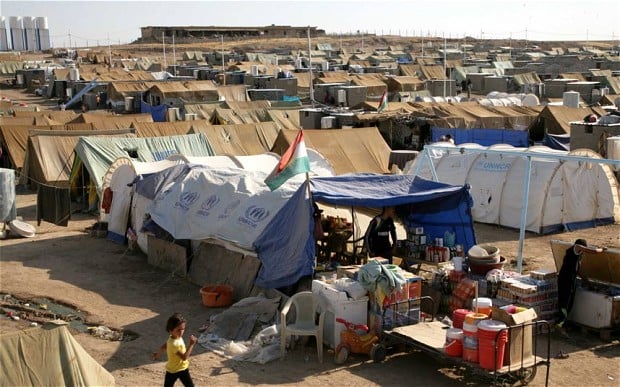
Trump says he would send Syrian refugees back if elected
US government vetting that includes face-to-face interviews, a health screening and security checks can take as long as two years.
A State Department official outlined the process in a background briefing as President Barack Obama directed his administration last month to prepare to take in at least 10,000 people fleeing Syria over the next year.
The desperate plight of the Syrian refugees
The United States has admitted about 1,500 refugees since the Syrian civil war began in 2011, while Europe is struggling with an influx of hundreds of thousands.
Hundreds of Americans sign petition offering to house Syrian refugees
Who is in charge
The US Refugee Admissions Program includes the State Department, the Department of Homeland Security and the Department of Health and Human Services. They work with international organizations, non-governmental and other groups, including religious organizations, to identify and settle refugees in the United States.
How long it takes
Processing includes an in-person interview, medical exam and security checks. None can be waived, as in some countries. The State Department said it takes from 18 to 24 months or longer to process a case from referral or application to US arrival.
First step:
Most migrants enter the US refugee program through a referral from the UN High Commissioner for Refugees. Some apply directly. The State Department already has 18,000 referrals of Syrian refugees from UNHCR and has begun casework for more than 10,000.
Preparing the file:
Applications go to one of nine State Department-funded "resettlement support centers" overseas run by international or non-government groups. Caseworkers, who are not US government officials, collect information from applicants.
The interview:
Officers from the Department of Homeland Security's Citizenship and Immigration Services travel from Washington to where the applicants are to decide whether they meet the legal definition of a refugee, based on whether they have faced or likely will face persecution.
Security checks:
Applicants undergo multiple background and security checks involving the National Counterterrorism Center; the FBI's Terrorist Screening Center; Homeland Security; and the State Department. Details of the checks are classified.
Health screening:
Applicants are screened for diseases that might pose a threat to public health. A resurgence of tuberculosis prompted US health authorities in 2007 to tighten testing protocols.
Final leg:
After a three-day cultural orientation class, the International Organization for Migration, an intergovernmental group, arranges travel. The US government pays travel costs, but refugees sign a reimbursement agreement.








1737406890-0/Elon-Musk-(4)1737406890-0-270x192.webp)














COMMENTS
Comments are moderated and generally will be posted if they are on-topic and not abusive.
For more information, please see our Comments FAQ